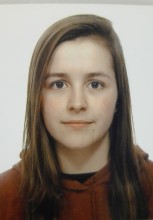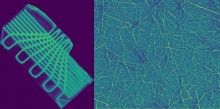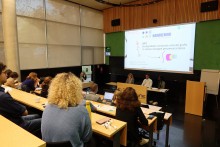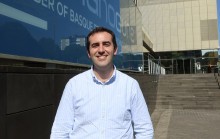Related news by tag Self-Assembly
nanoGUNE Scholarship: call for Master Thesis students

The Scholarships will be of a total amount of 3,000€. This amount is for the whole period and will not be compatible with any other grant or funding awarded for the same purpose. Candidates have to be pre-registered and accepted at the above mentioned Master degrees in order to be eligible for these grants. Interested candidates can find all the information about the offered master projects and the application process following this link.
Besides the grants, nanoGUNE offers Master students coming from any official Master degree the possibility to develop their Master Thesis within one of its research groups.
Summer Internship Program: call open until 5 February

NanoGUNE has just opened the registration period for the Summer Internship Program.
This year, we offer up to 13 projects for university students in the 3rd and 4th year of Physics, Chemistry, Biology, Engineering, and Mathematics. They will have the chance to get a closer look at the activity taking place at a cutting-edge research center for between six weeks and two months during the summer. This experience enables university students to collaborate with nanoGUNE researchers on their research projects in a whole range of fields, such as nanomagnetism, self-assembly, nanobiomechanics, nanodevices, nanomaterials, nanoimaging, and nanoengineering.
All the information about these projects, timetables, pay, etc. can be checked out at: https://www.nanogune.eu/summer-internship
Anyone interested in participated in the selection process needs to send an email attaching his/her academic record and CV to the address provided on the webpage no later than 5 February 2017. The students selected will be asked to attend an interview on 17 or 24 February.
Students from UPV / EHU, Tecnun, UAB and the UB carry out summer internships at CIC nanoGUNE
On Tuesday, 19 June, we welcomed a group of internship students that will carry out a research project at NanoGUNE during the summer. The director of the center, Jose M. Pitarke, received the students with a presentation talk about nanoGUNE, that was also attended by the researchers that will conduct the students’ projects.
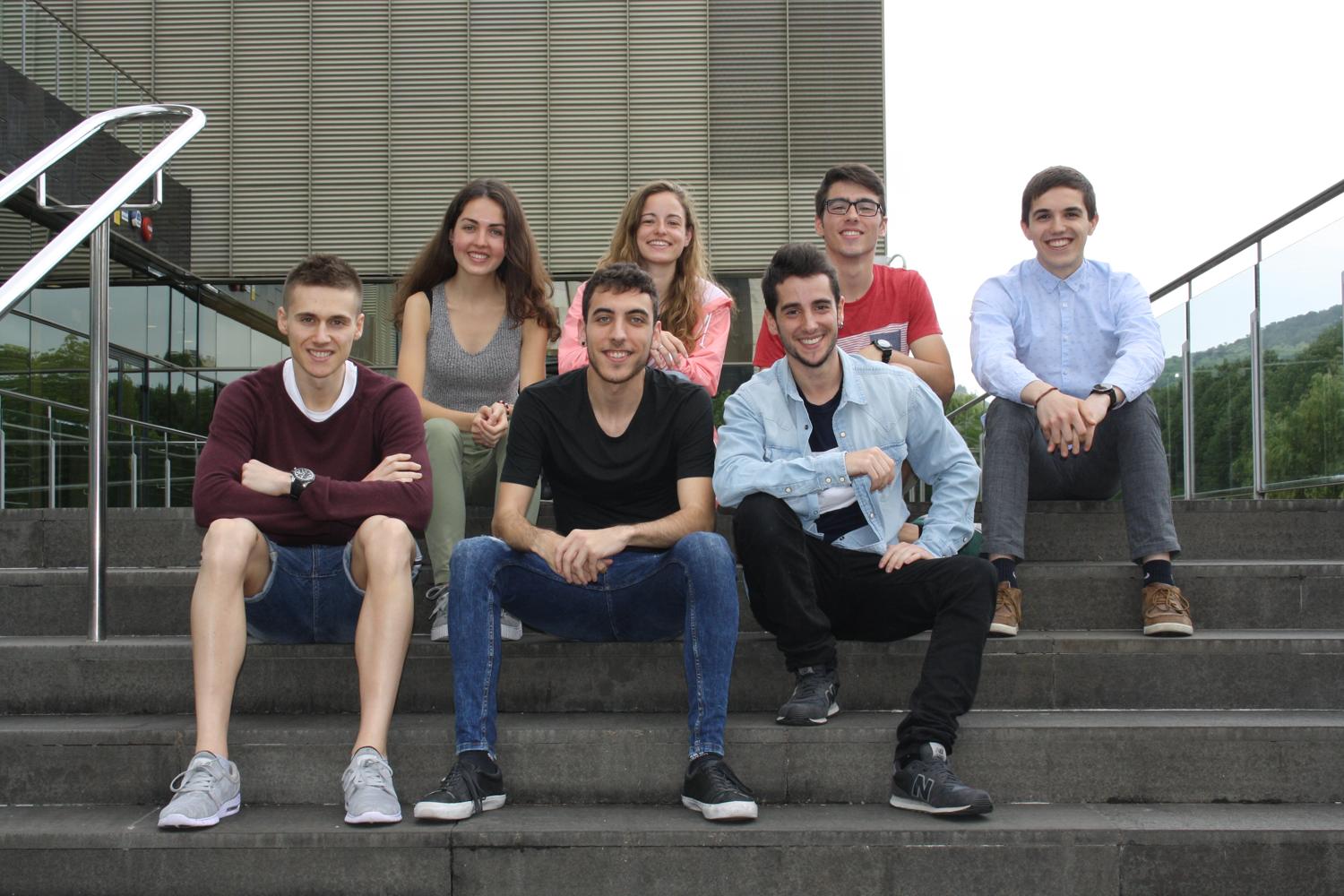
The 11 students come from different universities, among which are, Unibersity of the Basque Country (UPV /EHU), Tecnun, Univeristy of Barcelona (UB), Autonomous University of Barcelona (UAB). This program offers to the students a real experience of work in a research laboratory in order to make it easier for them to take decision about their future professional life.
The students will collaborate and learn with the different research groups at nanoGUNE, such as nanooptics, nanodevices or nanomagnetism. They will carry out a research project for two months following the instructions of a researcher of their group.
Some of them started the internships at the beginning of the month and they have been very involved in the group’s work. "The truth is that we started very suddenly; the very first day they took me to the laboratory," says Amaia Ochandorena, a student of Biochemistry and Molecular Biology at the UPV/EHU.
All the students knew CIC nanoGUNE and stressed that "it is an important research center" and "offers and works with topics of much interest".
For these students, and also for undergraduate students of general, nanoGUNE offers the possibility of collaborating with the center for the completion of final graduate or master thesis projects, for which also opens a call for grants every year.
nanoGUNE launches a new summer internship call for university students
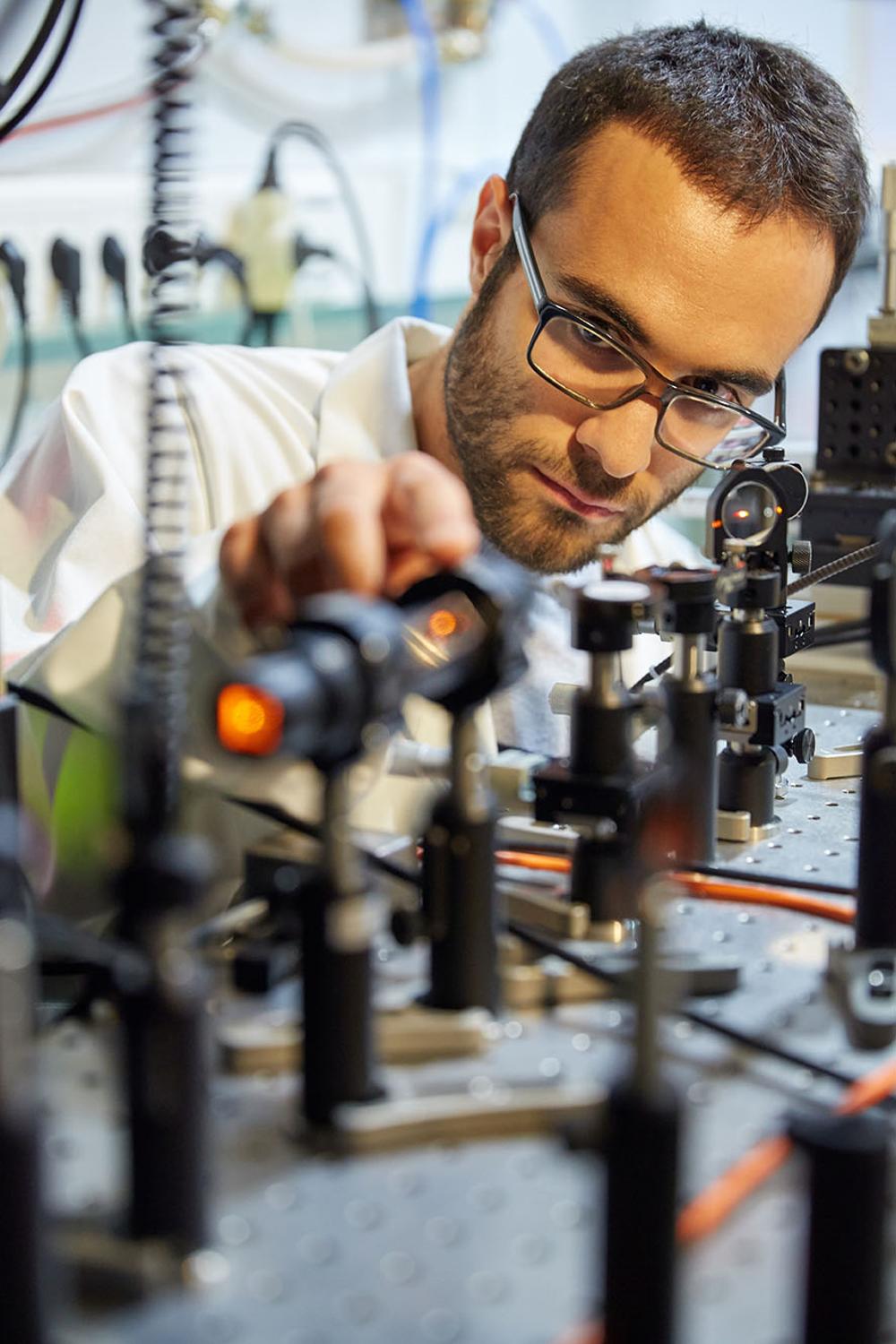
Through this programme the Basque nanoscience research centre will this summer be receiving about ten new students in their 3rd and 4th years of Physics, Chemistry, Biology and Engineering. For a period of six weeks or two months the young students will be collaborating with nanoGUNE researchers in their research projects on subjects such as electron/spin phenomena and magnetism, nanoscale optics, nanoscale materials and nanobioengineering, among others.
To participate in the summer internship programme any students who are interested will need to submit their applications online via the nanoGUNE website, the deadline being 16 February. Full information relating to the call is available via the nanoGUNE website (www.nanogune.eu)
Maider Rekondo-Salsamendi receives the Youth Entrepreneurship Scholarship

The nanoGUNE researcher conducts research on the technology of electrospinning, and thanks to this scholarship she is intending to develop a new technology in conjunction with the Novaspider 3D printing equipment.
The "Youth Entrepreneurship" program is geared towards supporting a maximum of 25 business ideas or initiatives. The aim is to activate an entrepreneurial culture among the students receiving the scholarship by offering funding for business initiatives that may emerge in the university sphere.
The projects selected receive a grant of 3,600 euros. In addition, the UPV/EHU-University of the Basque Country will be making available to them a network of mentors to provide them with professional consulting services while the project is being developed and will be running a specific course on entrepreneurship.
Alexander Bittner, new nanoGUNE Self-Assembly Group Leader
He previously worked in the Nanoscale Science Department of Prof. K. Kern at the Max Planck Institute for Solid State Research in Stuttgart (Germany), where he was the Head of the Group “Chemical Nanostructuring and Self-Assembly” since 1999. He worked as scientific collaborator in the STM group of Prof. G. Ertl in the Department of Physical Chemistry at Fritz-Haber-Institut of the Max-Planck-Gesellschaft, Berlin (Germany) from 1992 to 1996. Dr. Bittner has strong academic credentials in the field of physical chemistry and surface chemistry. His current research interests are focused on the topics of the use of plant viruses as templates for inorganic nanostructures and electrospinning, among others. Dr. Alexander Bittner is an Ikerbasque Senior Researcher.
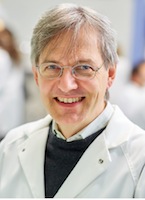
CardioPrint, new biofabrication processes for heart implants
CardioPrint combines the latest innovations in 3D printing, biomaterials and stem cell research with computational modelling, to design biomimetic and personalized cardiac tissue.
CIC nanoGUNE expands its patent portfolio
The diversity of application fields demonstrates the great versatility of nanoscience research, and the increase in licensed methods and technologies demonstrates its ability to improve and add value to industrial processes and products. "Our goal is to continue doing research of excellence and transferring those specific developments with the potential to improve the competitiveness of companies to the economic sector," explained Ainara Garcia-Gallastegui, head of Technology Transfer at nanoGUNE.
Registration period for the summer internship program open
CIC nanoGUNE has just launched the program for summer internships, which runs every year. University students are offered the chance to get involved in the activity of a world-class research center.
NanoReMedi, an innovative research project on regenerative medicine
Repair or replacement of tissue and organ functions, lost due to age, disease or damage, represents one of the most urgent medical needs of our aging society. The NanoReMedi consortium will contribute to addressing this fundamentally important issue by using a new and efficient scientific approach, relying on the design, preparation, characterization and validation of peptide-based functional nanomaterials.
Aspargi, Inbiomed, and nanoGUNE working hand in hand against Parkinson Disease
In 2014, Aspargi decided to financially contribute to the research on Parkinson Disease (PD) with the objective of increasing public awareness of both the disease and the need to investigate about its causes and treatments. The association started a fundraising campaign and opened a call for projects just after the 2014 Parkinson's World Day, 11th April. Because the idea was to promote collaboration, the projects were required to involve at least two different centers in Gipuzkoa.
In March 2015, the association announced that the winner of the 6 000€ award was an Inbiomed-nanoGUNE research project, led by Dr. Rosario Sánchez Pernaute, from Fundación Inbiomed, and Dr. Amaia Rebollo and Ikerbasque Research Professor Dr. Alexander Bittner, from nanoGUNE. This joint research project aims at developing better ways to grow neurons that could be used both to investigate and treat the disease.
The joint research project was initiated in 2012, when the researchers started thinking about new ways to implement the growth and the transplantation of neurons derived from stem cells, by using nanomaterials. “The aim of our research is to grow the cells in an environment similar to our brain. Usually, cells are treated and incubated in Petri dishes in the laboratories, but the results are not perfect”, Sánchez explains. "We believe this may happen (at least partly) because they are not grown in their natural environment, so we are working to recreate more natural conditions”, she adds.
At nanoGUNE, the researchers create a “nanospace”, made by a polymer fiber matrix, where cells automatically find a good place to fit. "We use a technique called electrospinning that allows to draw very fine fibers from a liquid polymer solution. We modify the polymer with the appropriate proteins, creating an environment similar to the natural environment that the neurons have in our brain”, explains Alexander Bittner, leader of the Self Assembly group at nanoGUNE. At Inbiomed, researchers grow the cells in fiber matrix, in order to obtain neurons that will behave like normal neurons. This allows investigating how the neurons grow, behave, and age.

Towards a replacement therapy to treat Parkinson
Rosario Sánchez explains that Parkinson should be called a syndrome instead of disease, as it is a collection of symptoms that may have different causes. “Although there seem to be different causes for Parkinson, a common link is the loss of dopamine that occurs because the neurons producing it degenerate and die. Treatments nowadays consist in replacing dopamine by different means (drugs, cells, or genes) in order to improve the typical symptoms of Parkinson: tremor, slowness, difficulty in switching motor programs, etc.", Sánchez adds.
“New ideas for treating and preventing diseases do not always require drugs. In PD it is possible to replace damaged cells by new neurons”, explained Bittner. “The problem is that we need fresh cells for this; stem cells are in a very early developing stage, so that we can program them to grow and develop into the cell type that we need”, added Bittner. This “reprogramming” allows the use of stem cells, e.g. from the skin of the patient.
Replacement therapies to treat Parkinson are already being used at an experimental stage. This therapy could be an alternative to the use of pills with dopamine-based drugs that present two main problems: the loss of efficacy with time and the difficulty of knowing how much dopamine does the patient need. "Using cells, the amount of dopamine would be regulated internally, as they have the sensors, the (dopamine) receptors for that", Sánchez explains. "However ---she adds– one of the main problems for the classical replacement therapy is to obtain a sufficient amount of cells for the treatment, as these cells have to be obtained from a fetus in a very early stage of development". This is the reason why it is so important to find ways to obtain good functional neurons from stem cells (from the patient) for replacement therapies.
Stable, efficient, and sustainable storage of digital data in DNA
Today's society needs more and more energy resources to store digital data. The electricity consumption of data centers is estimated to account for 2% of total greenhouse gas emissions and is expected to reach 8% by 2030. That is why finding new ways of storing digital information that take up less space, are secure, sustainable, cost-effective and consume less energy is urgent.

